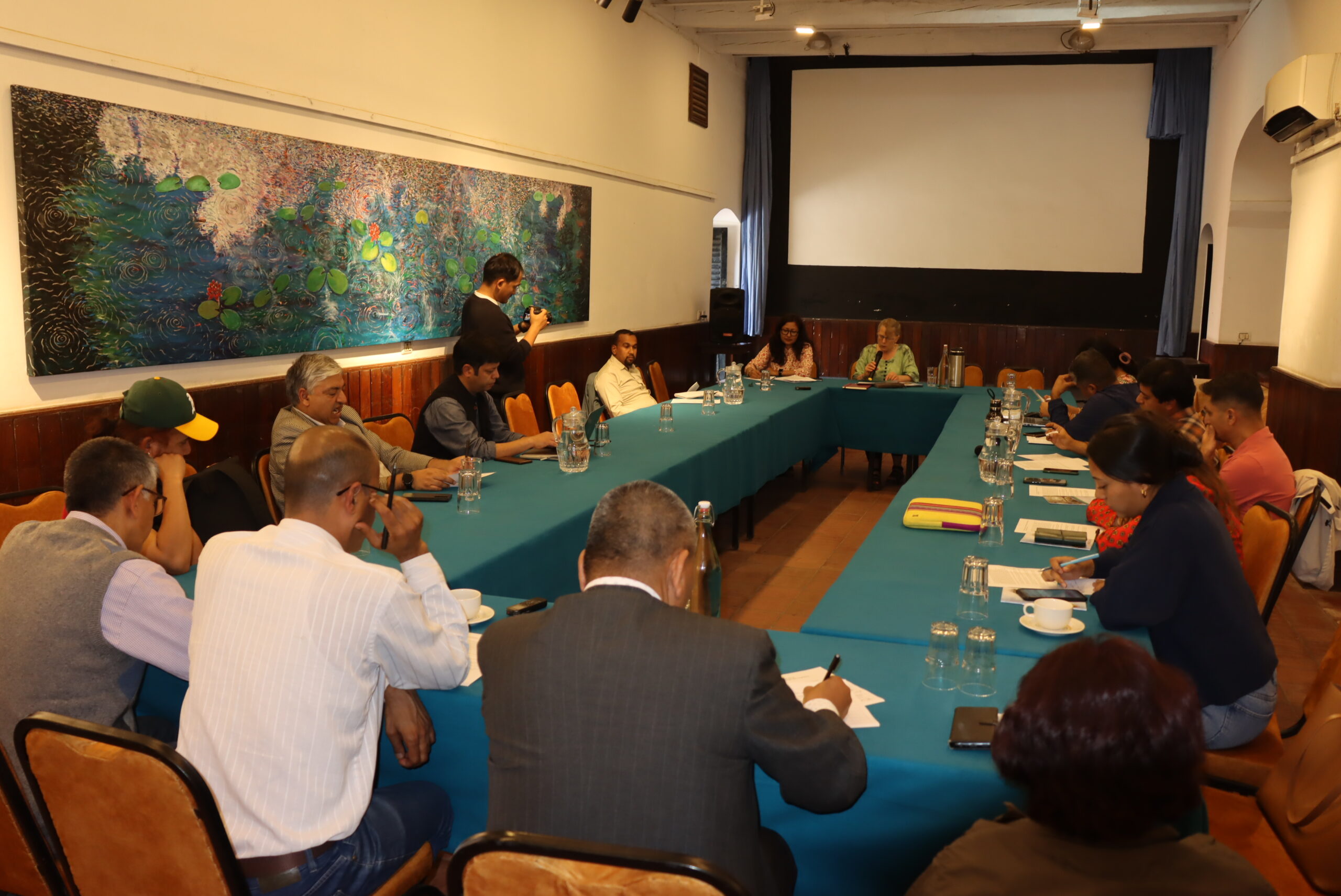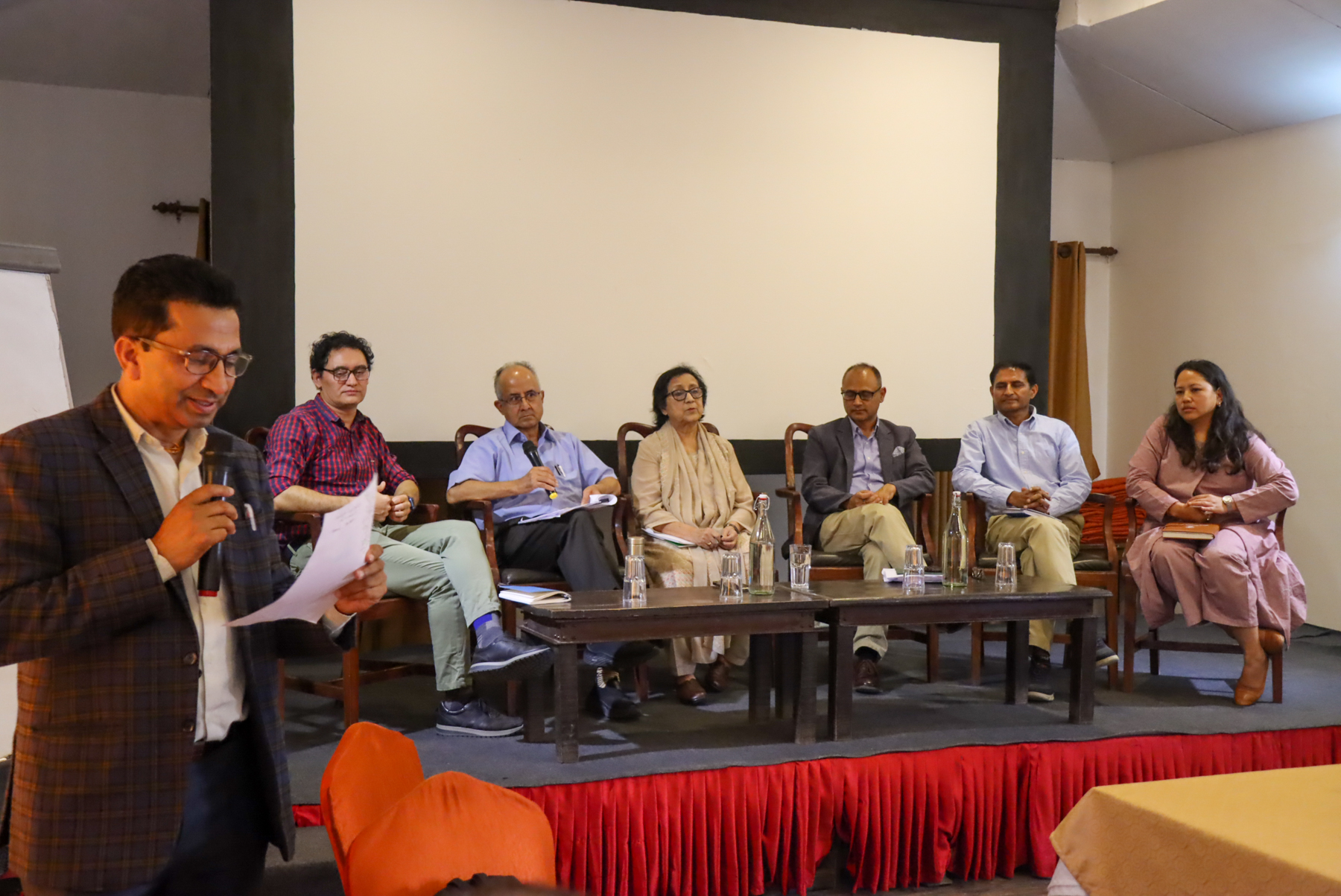The Tomorrow’s Cities (TC) project was launched in Khokana (Ward 21 of Lalitpur Metropolitan City or LMC) in February 2019 with the aim of reducing risks for the poor in tomorrow’s cities. This interdisciplinary research hub intends to gain a deeper understanding of multi-hazard context through both physical and social science research. As a key member of this research hub, Southasia Institute of Advanced Studies (SIAS) has been playing an important role since the beginning of the project in understanding disaster risks and vulnerability contexts through the co-production of research and engagements with the community of Khokana, local government, and other relevant stakeholders. After a thorough understanding of the local risk contexts, SIAS organized a ‘Visioning Workshop’ in 29-30 December 2021 in coordination with the Ward Disaster Management Committee (WDMC), incorporating disaggregated social groups where participants were asked to envision their aspirations, desires, and development priorities needed to achieve “a good life” in the next 20 years. The Khokana Visioning Booklet was prepared by compiling these disaggregated visions and, subsequently, a collective or ‘Meta vision’ of Khokana.
The Booklet was officially launched and unveiled on March 28, 2023, in a special event by the distinguished chief guest, Mr. Chiribabu Maharjan, Mayor of Lalitpur Metropolitan City (LMC), Ms. Manjali Shakya Bajracharya, Deputy Mayor of LMC, Prof. Dr. Sangeeta Singh, Institute of Engineering (IoE) and Mr. Rabindra Maharjan, ward chair of LMC-21, Khokana. Honourable Raj Kaji Maharjan, a member of the constituent assembly and a former Provincial Parliament member, also attended the event as a special guest. Mentioning the historical importance of Khokana, he emphasized the necessity for the ward and LMC to exert more effort in making Khokana ‘a prosperous cultural city’. He concluded with the commitment to provide the necessary support to achieve its vision through central and provincial governments.
Ms. Helen Shova Maharjan, the female ward member of LMC-21, welcomed all the distinguished guests and participants of the event. Ms. Maharjan revisited the history of the series of co-production engagements in Khokana that progressed to the Visioning workshop organized in Dhulikhel in 2021, which led to this momentous occasion. “The booklet being launched today captures the ideas, hopes, and aspirations of the different disaggregated groups of Khokana. It is also a testament to the hard work and dedication of everyone who participated in the visioning workshop, including the SIAS and IoE researchers,” she shared. Finally, she thanked all the participants for joining in the event celebration.
Dr. Dilli P. Poudel from SIAS briefly introduced the ‘Tomorrow’s Cities’ project and its partner institutions in Kathmandu (IoE, SIAS, NSET, NDRI, and Practical Action), and informed about the project engagements in Quito, Istanbul, and Nairobi. Informing participants about the five new cities (Rapti, Nepal; Nablus, Palestine; Dar-es-Salaam, Tanzania, and Chattogram and Cox’s Bazaar, Bangladesh), Dr. Poudel presented the Tomorrow’s Cities Decision Support Environment (TCDSE), working through different work packages WP1- Future visioning, WP2- Visioning scenario, WP3- Computational model, WP4- Risk agreement, and WP5- Institutionalising Decision Support Environment. Subsequently, Dr. Poudel talked about the activities and processes of the visioning workshop organized in Dhulikhel in December 2021. He added, “The outcomes of the workshop have taken the shape of the booklet and ensured that it would serve as a valuable resource for the ward government and support them in planning a resilient and inclusive Khokana.” Likewise, Dr. Maniram Banjade from SIAS informed the participants about the importance of visioning in city planning, explaining the planning histories of New York, USA, and the cities of Melbourne and Canberra, Australia. Dr. Banjande’s presentation further added value of the envisioned city to maintain not only the comfortable life of city dwellers but also design environmentally friendly and sustainable cities, which further convinced participants about the importance of visioning in city planning.
After the presentations, the Booklet was jointly unveiled by the Mayor, Deputy Mayor, Prof. Dr. Singh, and the Ward chair. Subsequently, the booklet was handed over to the Mayor and Deputy Mayor by the Chair.
Mr. Chiribabu Maharjan, Mayor of LMC, congratulated the Khokana communities for this initiative and urged everyone that this is the right time to make a good plan for an equitable Khokana with a unique cultural identity. Speaking about the plans to make a risk-resilient LMC, Mr. Maharjan committed to making LMC an umbrella network for disaster risk reduction (DRR). He also committed to effective utilization of the budget allocated in Research and Development (R&D) for DRR in his tenureship. Lastly, Mr. Maharjan congratulated LMC-21 Khokana and SIAS for publishing a visioning booklet and heartily requested other wards to learn from this and do the same.
During the panel discussion moderated by Dr. Netra Prasad Timsina from SIAS, Dr. Dharam Uprety, Practical Action Nepal, emphasized the importance of community visions while planning future cities. Envisioning such a city, he added, requires consideration of the potential impacts of climate change, a global issue that can significantly affect urban areas, and the early warning system to reduce disaster risks. He also committed to sharing the findings of the research related to natural hazards at the earliest with the communities. Dr. Divas Basnyat, Nepal Development Research Institute (NDRI), stressing the potential impacts of climate change in future cities, showed interest in collaborating with LMC’s Research and Development (R&D) department. Finally, he congratulated the commendable joint effort of the ward and SIAS in publishing the visioning booklet.
Prof. Dr. Sangeeta Singh (IoE), reflected back on choosing Khokana as a project site, Khokana’s representation of various aspects of Kathmandu made it an ideal case for the project. She shared, “In line with the global agenda of making cities liveable, inclusive, safer, and resilient from multi-hazards, Kathmandu’s Tomorrow’s city project team is committed to supporting Khokana in achieving that goal.” She also committed to sharing and delivering the outputs of the research hub to Khokana’s planning authorities as soon as possible.
Ms. Manjali Shakya, Deputy mayor of LMC, emphasized the importance of blending contemporary science and technology with indigenous knowledge to make Khokana and the entire municipality safer. “Khokana, being the pioneer in the whole municipality in preparing its vision (through this Booklet), will now find it easier to plan and work on its goal of achieving an inclusive and resilient cultural city,” she added. In addition to explaining the significance of visions for the advancement of individuals and society, she explicitly committed to providing full assistance in implementing their envisioned plans and initiatives. Finally, she expressed her gratitude to the project team for helping to promote Khokana and LMC globally through the TC project.
In the closing session, Mr. Rabindra Maharjan, ward chair of LMC-21 Khokana and the chair of the event, shared that the visioning booklet is a milestone for future Khokana, which will provide a strong basis and guidance in the preparation of the developmental plans. He praised all the participants of the visioning workshop for their dedication and enthusiastic participation throughout the different phases of the co-production activities in Khokana and the visioning workshop; the research team of SIAS for their seamless technical assistance in the publication of this booklet, and all the distinguished guests for their honorable presence in the launching event. He concluded his remarks by stressing that the booklet is a live document and will be in continuous processing with space for further discussions and suggestions, which aims to make Khokana- a resilient and inclusive cultural city to be enlisted as a World Heritage Site.




